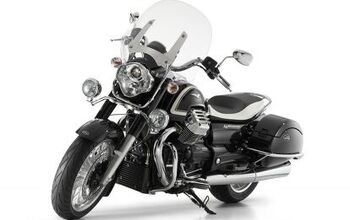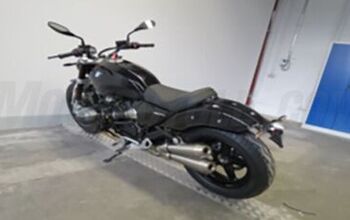Moto Guzzi California, Scrambler Prototypes

Moto Guzzi California, Scrambler Prototypes
Photos of the two prototypes, a new California and a V7 Scrambler, were leaked following the Jan. 27-28 dealer meeting and Piaggio has responded by releasing limited details about the two future Moto Guzzi models.
The Moto Guzzi California prototype uses a new 1400cc 90 degree Twin, as opposed to the 1064cc Twin found on current Moto Guzzi California models. Like other Moto Guzzi models, the engine is mounted with its cylinders protruding outward to the side. The fuel tank, described along with the saddle by Moto Guzzi as generously sized, is fitted around the cylinders, highlighting the new valve covers. Suspension, wheels and radial mounted brakes are all new.
The Scrambler is the newest take on Moto Guzzis V7 platform with the same frame as the V7 Classic with a 750cc Twin engine. According to Piaggio, the V7 Scrambler was inspired by the Moto Guzzi 175 Lodola of the late 1950s with the low headlight and integrated instrument panel. Other features include chrome trim, spoked wheels and the raised twin silencers.
Piaggio has not provided details on when either model will go into production. The V7 Scrambler will likely be the first to arrive since it shares the same platform as the V7 Classic.

Motorcycle.com presents an unrivaled combination of bike reviews and news written by industry experts
More by Motorcycle.com Staff





























Comments
Join the conversation